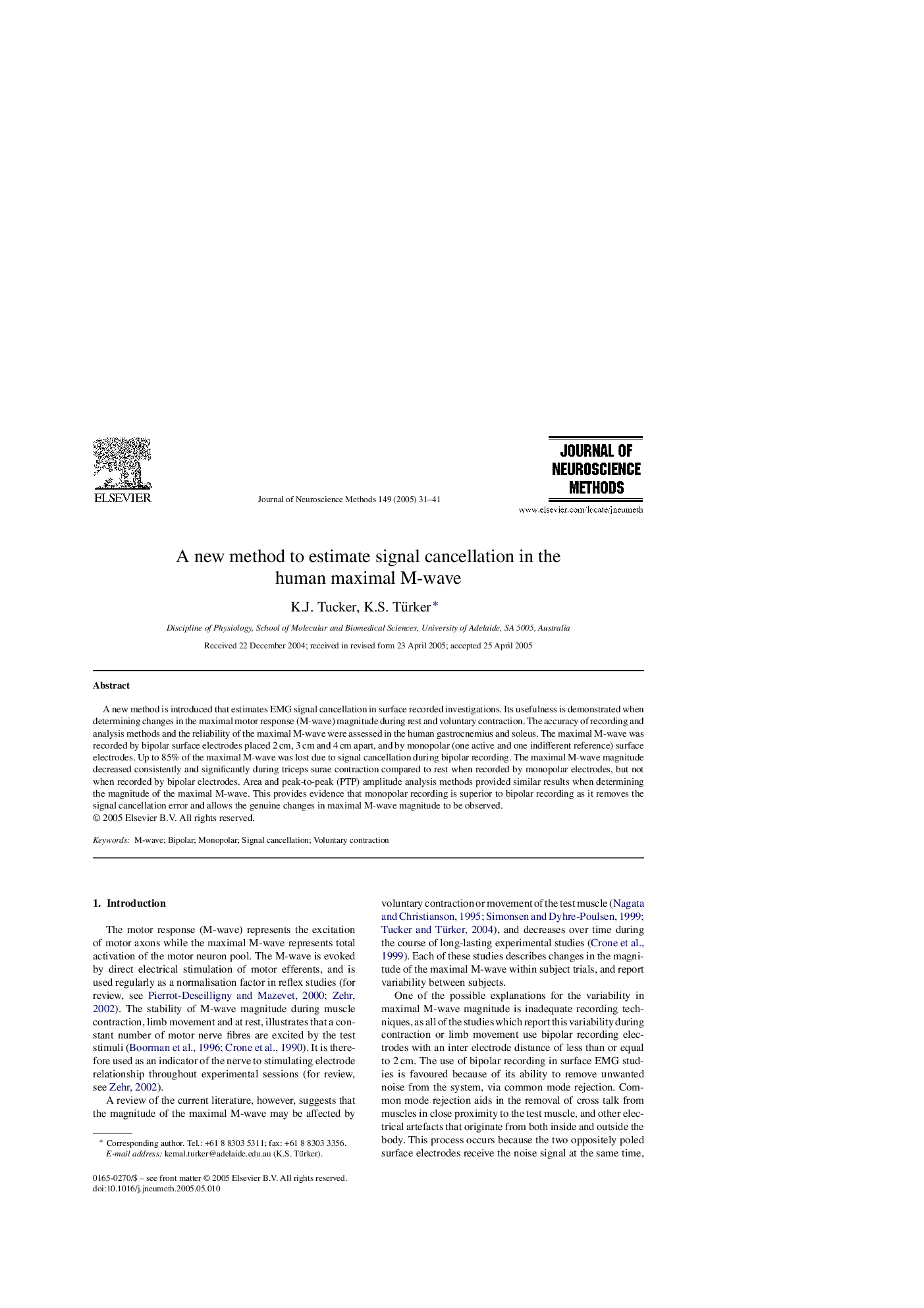| Article ID | Journal | Published Year | Pages | File Type |
|---|---|---|---|---|
| 9424134 | Journal of Neuroscience Methods | 2005 | 11 Pages |
Abstract
A new method is introduced that estimates EMG signal cancellation in surface recorded investigations. Its usefulness is demonstrated when determining changes in the maximal motor response (M-wave) magnitude during rest and voluntary contraction. The accuracy of recording and analysis methods and the reliability of the maximal M-wave were assessed in the human gastrocnemius and soleus. The maximal M-wave was recorded by bipolar surface electrodes placed 2Â cm, 3Â cm and 4Â cm apart, and by monopolar (one active and one indifferent reference) surface electrodes. Up to 85% of the maximal M-wave was lost due to signal cancellation during bipolar recording. The maximal M-wave magnitude decreased consistently and significantly during triceps surae contraction compared to rest when recorded by monopolar electrodes, but not when recorded by bipolar electrodes. Area and peak-to-peak (PTP) amplitude analysis methods provided similar results when determining the magnitude of the maximal M-wave. This provides evidence that monopolar recording is superior to bipolar recording as it removes the signal cancellation error and allows the genuine changes in maximal M-wave magnitude to be observed.
Related Topics
Life Sciences
Neuroscience
Neuroscience (General)
Authors
K.J. Tucker, K.S. Türker,
